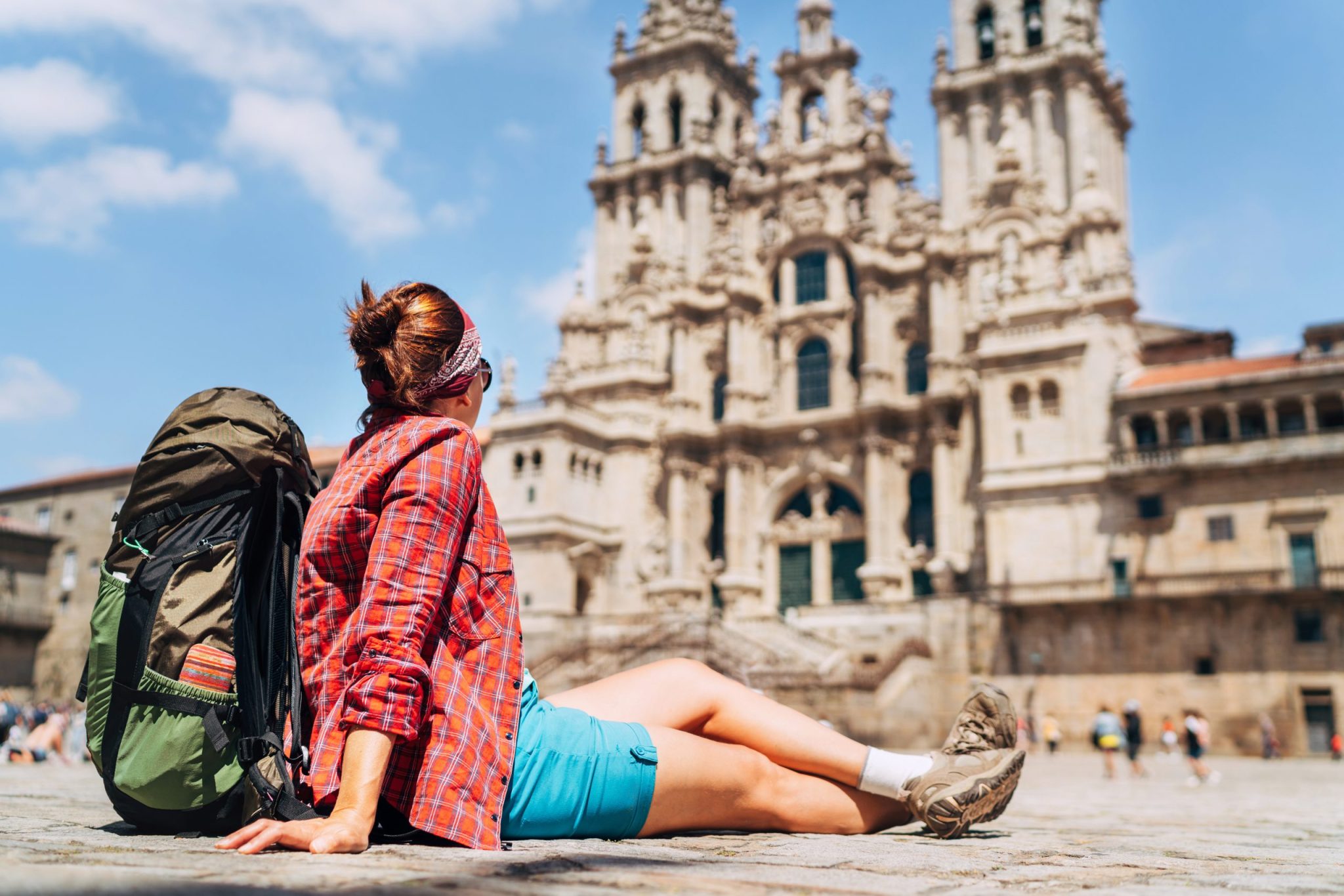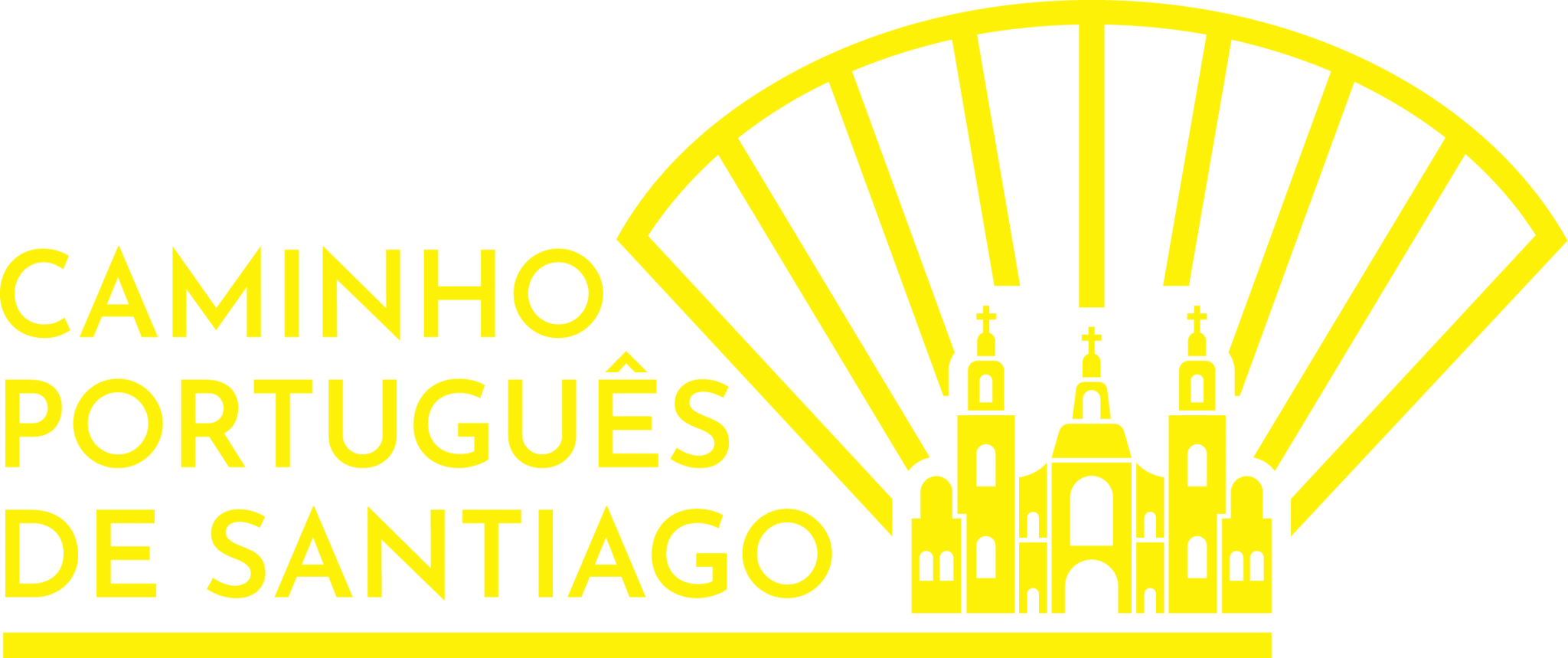Beginner’s Guide to the Portuguese Way of Santiago

This Beginner’s Guide to Portuguese Way gives you all the details you need to make the journey without doubts. Read here about all the doubts shared by pilgrims before starting the route, so you don’t get distracted looking for the information on several different websites.
What is the Portuguese Way of Santiago?
Our beginner’s guide to the Portuguese Way of Santiago is here to answer that question. It is an ancient path crossed by thousands of people every year. The Camino has at least 281 official routes, three of which are Portuguese. Some leave from Lisbon, others from Vila Real de Santo António, but most people start the route in the city of Porto.
So here we are going to talk a little about the different Portuguese Ways of Santiago.
- Portuguese Central Way of Santiago
The oldest (and most traveled) of all the Ways of Santiago in Portugal. It starts in Lisbon, passing through the emblematic cities of Coimbra and Porto to the Galician capital. Excellent for those who want to get to know the deep parts of Portugal, its stories and marvel at the landscapes over the course of a month. With 620 kilometers between the different capitals, this means about 25 days walking or 5 by bike (If you want to read more about taking the route by bike, you can read here).
This is one of the Paths with the most interesting history. It has a direct connection to the economic and social life of Portugal and Galicia, as King Manuel I travelled these roads twice! Also, Queen Santa Isabel, after D. Dinis’ death, went on this fabulous pilgrimage, and was even later buried with a pilgrim’s staff.
If you want to know more about this route you can read our article, here.
2. Coastal Portuguese Way
This path starts in Porto and goes all the way by the sea. However, this path has one particularity: it is divided in 2! Starting in Porto, we can always go along the shores of the ocean or move a little further away and follow it within the mountains of Portugal. Without detriment to any of the stages, this choice is attractive to any walker, as it gives us complete freedom on how to spend the day. Also in Caminha we have to make a choice. Either we go straight to Spain, keeping an eye on the sea until Redondela, or we continue to Valença seeing the Douro River until this town.
Some people say this is the “real” Portuguese Way of Santiago when the tradition started 10 centuries ago. However, what really matters is the inner journey. Speaking of which!
3. Interior Portuguese Way
The least known of the already mentioned routes, being one of the last to be certified by the Portuguese government in 2021. With 205 kilometers inside of Portuguese territory, this route goes from Viseu to Chaves, with a connection to the already known “Via de la Plata”, in Spain. The infrastructure is not very good, as we only have 10 hostels and only a few of them are working permanently. However, it is a new way to discover the beauty of Portugal little by little. To those who have already experiences this adventure, write in the comment section what were your thoughts!
Preparing for the Way to Santiago
This is one of those questions that affect all pilgrims. Now that we have decided which stretch to take, how do we prepare to walk to the Praça do Obradoiro?
Let’s start with the most important thing. What to bring?
We have already written an article on the subject, which you can read here, however, here’s a summary.
One of those camping backpacks, to give you a breeze on your back and to comfortably store what you need for the trip. That is, a change of clothes, so you can wash them alternately with the ones you have on your body, and a water canteen or other type of reservoir. You should also have your documents and pilgrim’s certificate with you at all times, since the hostels only accept people with everything in order for everyone’s safety.
The backpack, although it varies from person to person, should only be 10% of our total weight. For example, if you weigh 70 kilos, try to stick to a maximum of 7 kilos. Although this metric is subjective, it can help you plan and carry only the essentials.
However, you can find almost all of this on the road. The infrastructure is good and the people even better. There is a saying among hikers: “the path gives you everything you need.
About the pilgrim certificate, this can be acquired at the headquarters of pilgrim associations, churches, and even hostels. If you start your adventure without it, it’s not a big problem, but you may not have access to the pilgrim menu at lunchtime.
And the physical preparation?
We have also talked about this subject before. So you can read in detail here everything we know about physical preparation before the walk.
Most people can do the walk without major difficulties, even without any preparation whatsoever. This is because, as the author Agostinho Leal writes in his book, “Memories of a Pilgrim”, we should stop when we are tired and eat when we are hungry. If the fatigue is too much, we just need to know which is the closest hostel and stay there to rest.
However, if you injure yourself on the way, contact pilgrim support services to have them take you to a safe place and rest.
Speaking of injuries, never forget a small first aid kit. You never know when accidents will happen, and better be safe than sorry.
For effective training, start regular walks with a heavy backpack to get used to the extra weight.
When should I do the Way of Santiago?
The poetic answer might be: whenever you want. But that doesn’t encompass the amount of obligations one has. That’s why most of us make the trek during our vacations.
However, when we see the hostels full in August, the unbearable heat, and the time spent standing in supermarket lines, we begin to reflect on the matter.
So it’s really better to go in the lower seasons like in May and June or September. Because it can get cold at night, we recommend to bring a good sleeping bag. In spring time and late summer we have some company along the way, but not too much. It is warm, but not as the temperatures felt in August. To make it better, since there are fewer people on the trails, the merchants will treat us much better. The policy in these lands is: “with time, everything gets done”. However, when 30 Germans want a beer and some snacks and there is an even longer queue to arrive, the small businessmen tend to get a little lost due to the workload, which affects the service’s quality.
Being early (or late)gives you the best of both worlds. Hostels with vacancies and restaurants with time.
Beginner’s Guide to the Portuguese Way of Santiago: Conclusion
And here it is, a mini-route of what you need to know to do the Portuguese Way of Santiago. Did we leave out any important information? Tell us in the comments!



